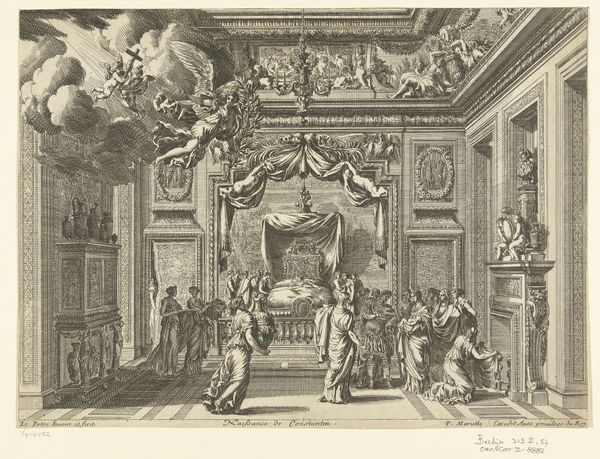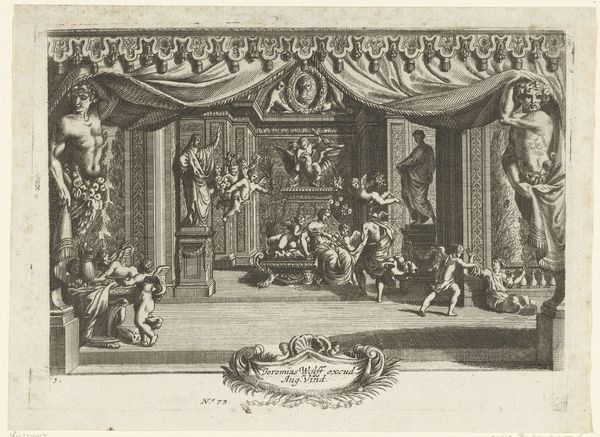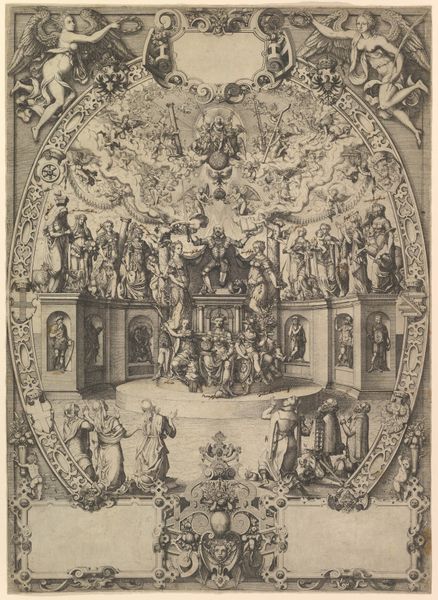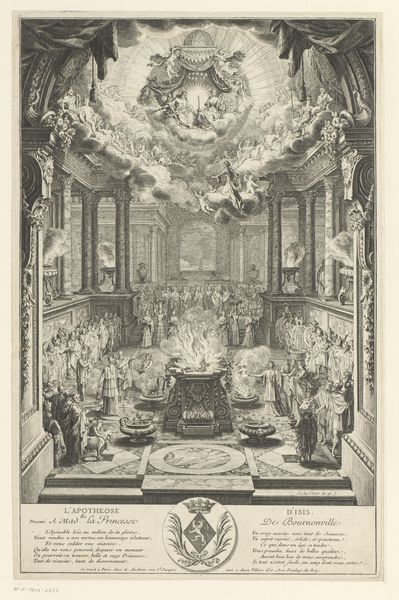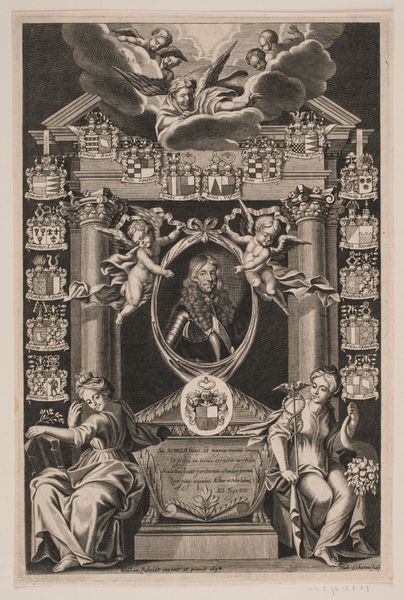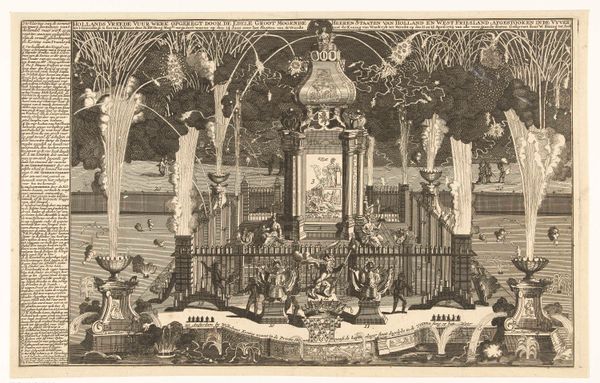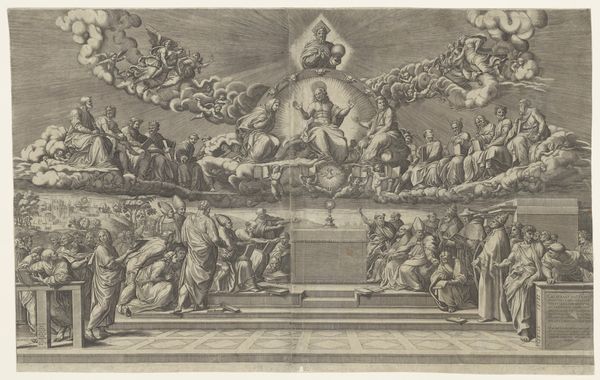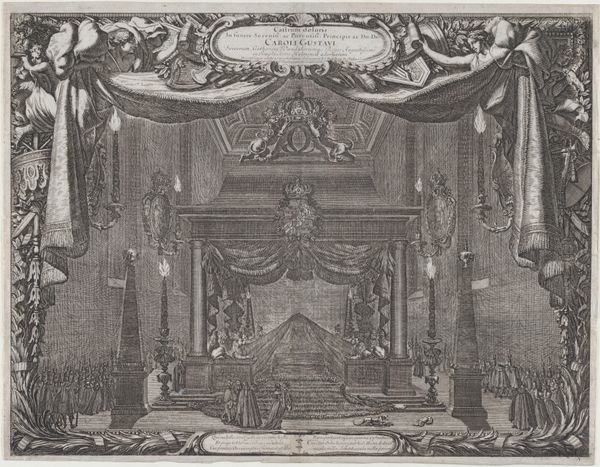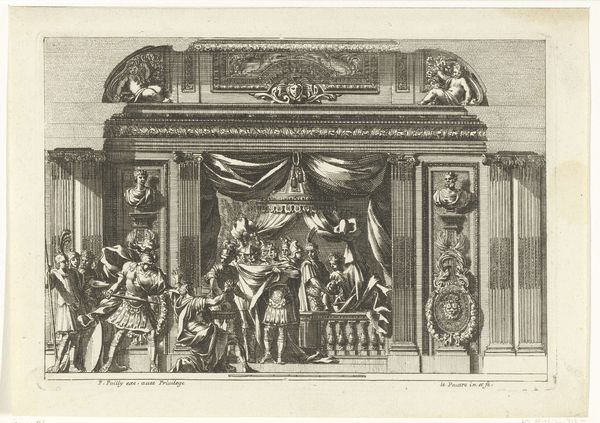
engraving
#
allegory
#
baroque
#
symbol
#
old engraving style
#
figuration
#
line
#
history-painting
#
academic-art
#
engraving
#
realism
Dimensions: height 328 mm, width 444 mm
Copyright: Rijks Museum: Open Domain
Editor: This engraving, titled "Allegory of the Treaty of Westminster," created in 1674 by Gerard de Lairesse, has such intricate detail. It almost feels like I'm peering into a stage play. How should we interpret all these characters and symbols? Curator: Think about engraving as a *process*, not just an image. Look closely. Each line, each tonal shift, results from labor, from someone physically cutting into a metal plate. What does it *mean* that this treaty, this historical moment, is being rendered through such a deliberate, manufactured medium? Consider also, who was commissioning and consuming these images? Editor: So, the engraving process itself becomes part of the story, implying an investment of time and skill into legitimizing this treaty through reproducible images for widespread distribution. Who are the figures and why did this process matter? Curator: Precisely! We’re not simply viewing an event; we are seeing it meticulously constructed. Now consider the *material* cost and skill involved versus simpler methods of documenting such an event? What effect did it have by being in print, widely spread and available for consumption? It's also worth considering the artist’s choices about visual vocabulary -- allegory as the ultimate method of meaning, of controlling messaging, rather than more straight-forward, journalistic approaches. Editor: So, it is more about how it’s constructed through a specific *process* as opposed to what's depicted? That’s intriguing. I hadn't thought about the means of production being part of the message. Curator: Exactly! We’re less concerned with a literal translation and more concerned with unpacking *how* and *why* certain materials and modes of production were prioritized to solidify an intended message, especially considering accessibility to an increasingly broad and consuming audience. That helps us unpack it today. Editor: This makes the entire work more of a statement on power and distribution, not just about peace. Thanks for opening my eyes to this. Curator: And, now we are attuned to consider process and materials as the underpinning meaning and value in artworks.
Comments
rijksmuseum about 2 years ago
⋮
This depiction is in the form of a stage setting. De Lairesse was familiar with the world of the theatre: he designed various décors for the Amsterdam Theatre. Depicted in the middle is the signing of the Treaty of Westminster, above which are the portraits of King Charles II of England and Stadholder William III. This peace treaty signalled the end of the Third Anglo-Dutch War (1672-1674).
Join the conversation
Join millions of artists and users on Artera today and experience the ultimate creative platform.
